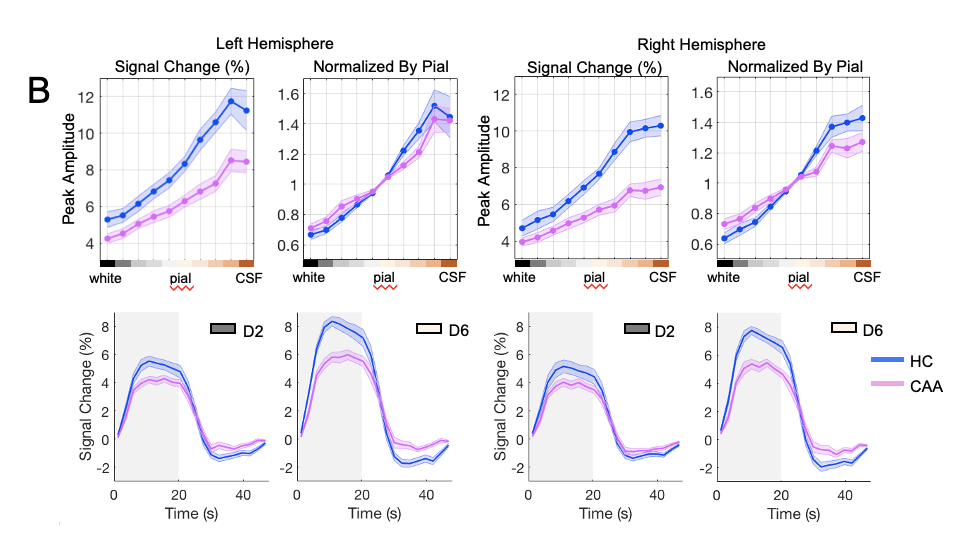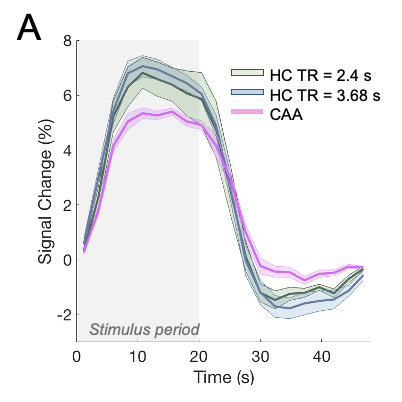Problem
There has been research to prove that cerebral amyloid angiography (CAA) can lead to
measurable differences in the fMRI response amplitude.
Objective
For this study, the goal was to examine the hemodynamic responses across different cortical depths driven by visual stimulation and CO2 inhalation.
Skills Employed
- MATLAB
- Linux environment
- Statistical analysis and basic signal processing

